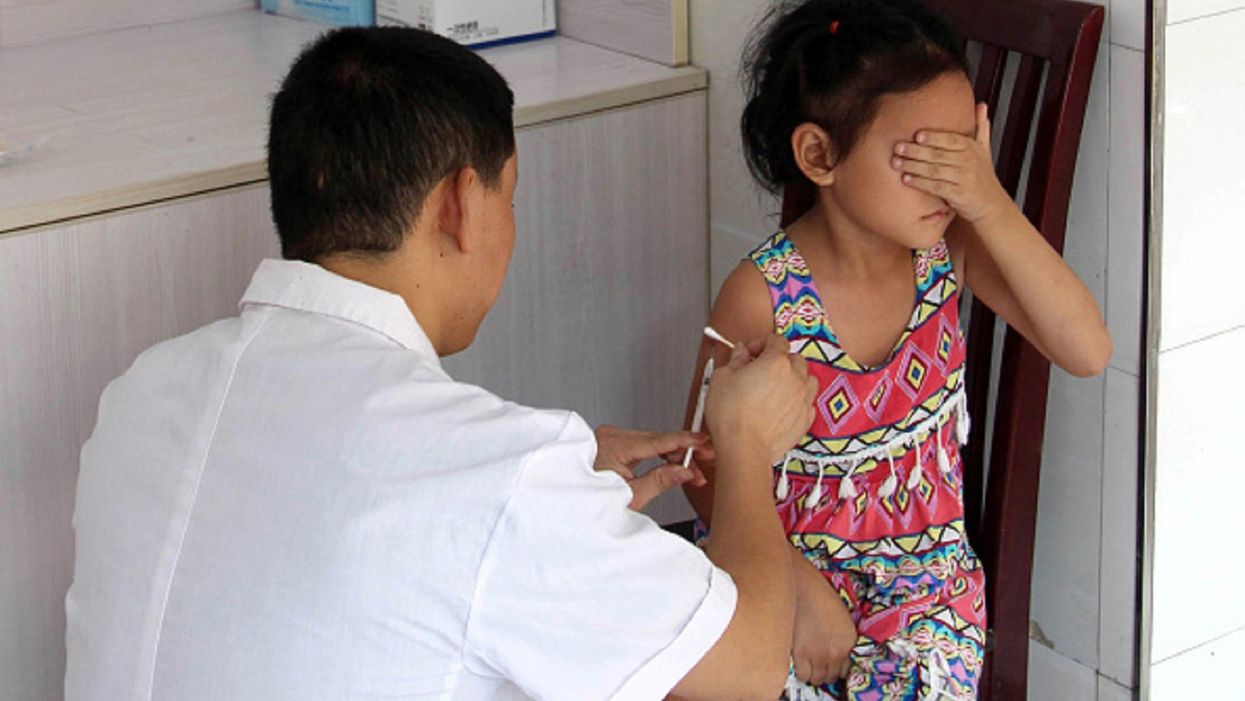
STR/AFP/Getty Images

Cites re-emergence of diseases that were previously close to eradication
The World Health Organization rolled out its top ten threats to global health in 2019, and vaccine hesitancy made the list. WHO pointed to a re-emergence of common vaccine-preventable diseases, some of which were nearly eradicated in the past.
In making its case, the WHO explains that measles has seen a 30 percent uptick in cases worldwide, stating that "some countries that were close to eliminating the disease have seen a resurgence." But the international agency stopped short of blaming avoidable deaths entirely on vaccine hesitancy, and acknowledged that the "reasons why people choose not to vaccinate are complex," such as "complacency, inconvenience in accessing vaccines, and lack of confidence."
Newsweek reported that campaigns against vaccination have gained ground in several developed countries in recent years — particularly in the U.S. — citing Centers for Disease Control and Prevention data showing that the percentage of children from 19 months to 35 months "who have received no vaccinations has quadrupled since 2001."
Last year, a study published in the journal PLOS Medicine warned that "Since 2009, the number of 'philosophical-belief' vaccine nonmedical exemptions has risen in 12 of the 18 states that currently allow this policy: Arkansas, Arizona, Idaho, Maine, Minnesota, North Dakota, Ohio, Oklahoma, Oregon, Pennsylvania, Texas, and Utah."
Europe also saw a spike in measles cases in 2018, with anti-vaccination campaigns being blamed for infections hitting a 10-year record on the continent.
Dr. Dyan Hes explained to the BBC that part of the reason modern parents don't always realize the risk of not immunizing against childhood diseases is because many ailments have been largely eradicated and are therefore uncommon today.
"They don't see that so they don't know, so they say, 'What's the big deal? It's a rash, you know, it won't be my kid,'" Hes said.
"But people forget what childhood death is and what infantile mortality is," Hes continued. "People forget how many children died or were left with encephalitis or terrible brain diseases that caused mental retardation and people to be institutionalized for the rest of their life from measles."
Listed unnumbered and in no particular order, WHO named the other nine threats as being: air pollution and climate change, noncommunicable diseases, global influenza pandemic, fragile and vulnerable settings, antimicrobial resistance, Ebola and other high-threat pathogens, weak primary health care, Dengue, and HIV.
According to the WHO, addressing these threats through its new five-year strategic plan will mean "ensuring 1 billion more people benefit from access to universal health coverage, 1 billion more people are protected from health emergencies and 1 billion more people enjoy better health and well-being."